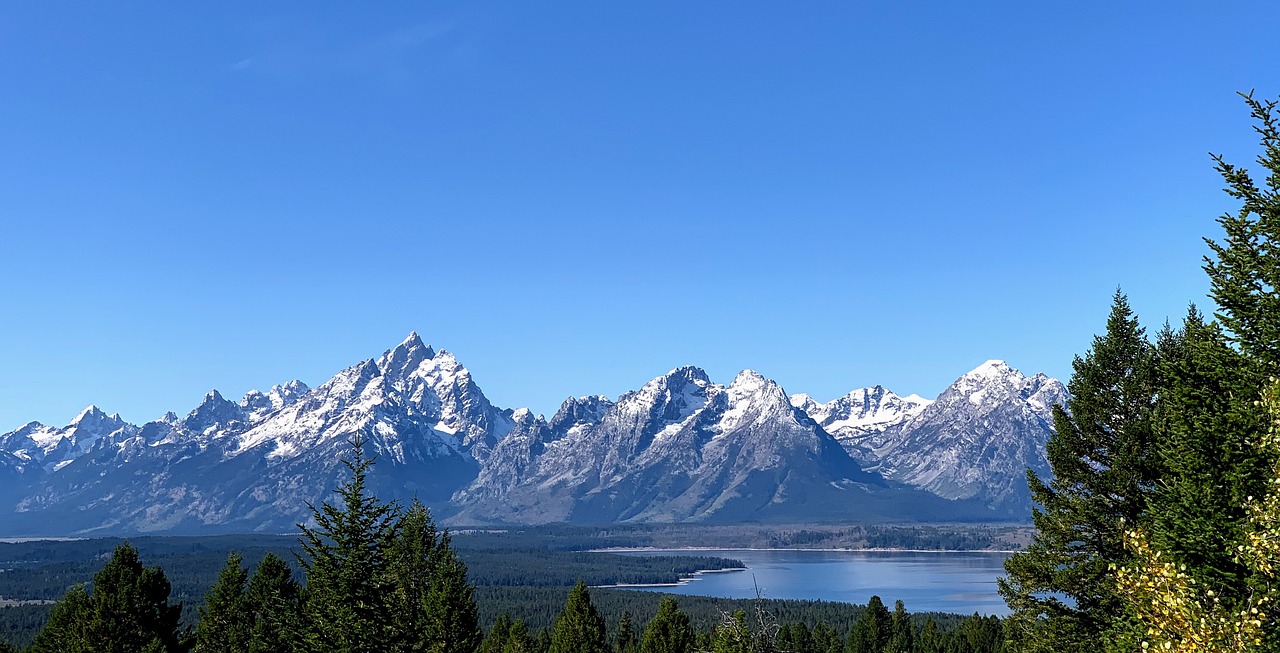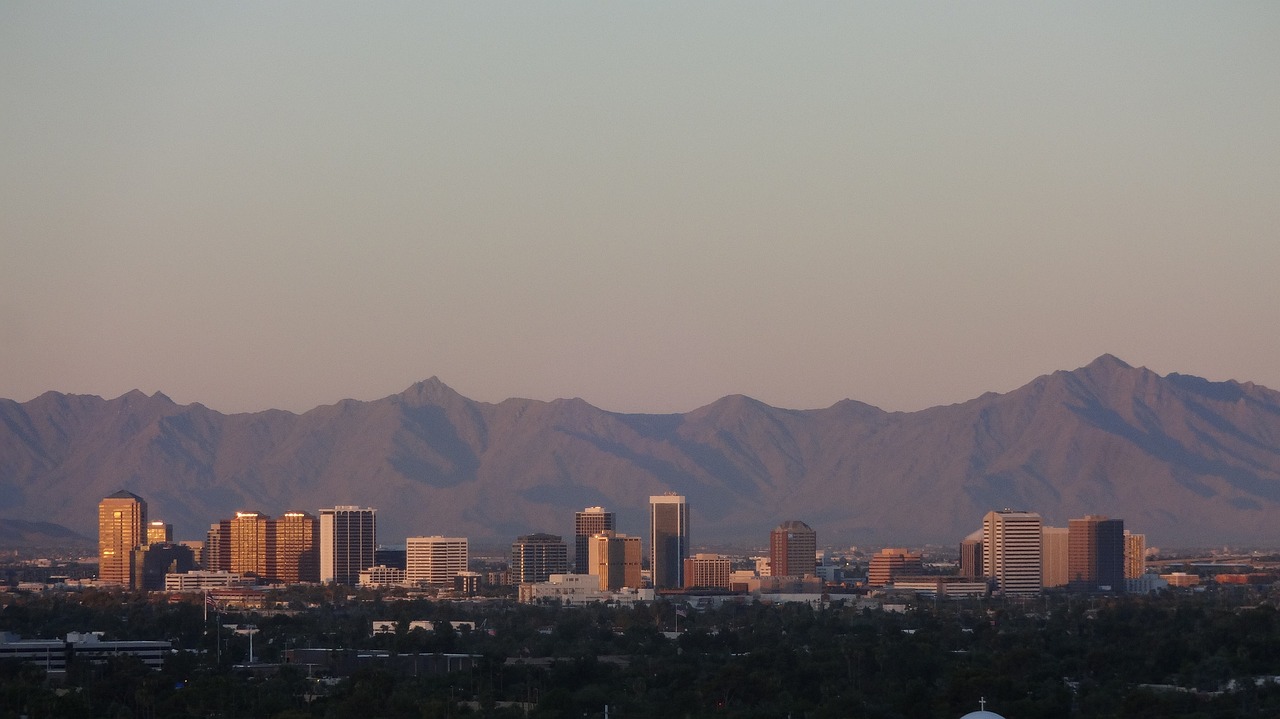
Looking for a great place to explore? Grand Teton National Park is it. This park has stunning mountains and clear lakes. We’ll show you the best spots to visit and activities to do.
Get ready for adventure!
Key Takeaways
- Grand Teton National Park has the Teton Range with its highest peak, Grand Teton, at 13,775 feet. It is popular for hiking and climbing.
- The park includes Jackson Hole Valley and offers activities like skiing in winter and hiking in summer. Jenny Lake and Jackson Lake are key spots for boating and fishing.
- Wildlife includes over 60 species of mammals such as elk, moose, bison, and grizzly bears. There are also more than 300 bird species.
- Conservation efforts focus on protecting wildlife like grizzly bears and preserving natural resources. The park works to maintain its ecosystem balance.
- Visitors can enjoy many recreational activities including mountaineering, camping, boating, fishing, winter sports like cross-country skiing and snowshoeing.
Geography of Grand Teton National Park

Grand Teton National Park boasts the iconic Teton Range, which dominates the park’s skyline. The picturesque Jackson Hole Valley and numerous lakes and rivers also contribute to its breathtaking geography.
Teton Range
The Teton Range is a stunning part of Wyoming. It’s inside Grand Teton National Park. These mountains are tall and rocky, reaching up into the sky. The highest peak is Grand Teton itself, standing at 13,775 feet.
Many people come here to hike and climb. The views from the top are amazing. You can see for miles around, including Jackson Hole below. This range has more than just high peaks; it also has beautiful wildflowers and wildlife like elk and bears.
Jackson Hole
Jackson Hole is a valley in Wyoming. It sits below the Teton Range. This place is not just any valley; it’s unique and wide, stretching about 55 miles long and 13 miles wide. People come here to see its beauty and enjoy outdoor activities.
In this area, you find the town of Jackson, small communities, ranches, and rivers that draw visitors from all over. Its name comes from early trappers who called deep valleys “holes.” They named it after David Edward Jackson, a fur trapper.
Today, Jackson Hole is famous for skiing in winter and hiking in summer. It acts as a gateway to Grand Teton National Park and nearby Yellowstone National Park.
Lakes and Rivers
Grand Teton National Park is home to stunning lakes and rivers. The main attraction, Jenny Lake, offers clear waters that reflect the towering Tetons. Here, visitors can boat or enjoy quiet spots for fishing.
Another spot, Jackson Lake, is larger and perfect for sailing and water sports. It’s fed by the Snake River which winds through the park. This river is great for rafting and provides important habitats for animals.
Streams and smaller lakes dot the landscape too. They are peaceful places for spotting wildlife or dipping your toes on a hot day. These waters come from melting snow high in the mountains each spring.
As we move from liquid to solid water forms in Grand Teton National Park, let’s explore how glaciers have shaped this breathtaking landscape in “Geology and Glaciation”.
Geology and Glaciation
The Teton Range was formed millions of years ago due to intense tectonic activity, creating a jagged and dramatic landscape. Glacial movements sculpted the peaks, leaving behind U-shaped valleys and massive moraines.
Formation of the Teton Range
The Teton Range, in Grand Teton National Park, was formed around 9 million years ago. It happened due to the movement of tectonic plates that pushed the Earth’s crust upwards. Erosion also played a vital role in shaping these majestic peaks over millions of years.
Glaciers and ice helped carve the dramatic jagged peaks you see today. The most prominent peak, the Grand Teton, reaches an elevation of 13,775 feet. This geological history has made the park a prime destination for hikers and mountaineers who flock to explore its rugged beauty.
Glacial Features
The glacial features in Grand Teton National Park are evidence of its icy past. Massive glaciers once sculpted the land, leaving behind jagged peaks, deep U-shaped valleys, and stunning alpine lakes.
The most famous glacial feature is Jenny Lake, a crystal-clear body of water formed by glaciers over 10,000 years ago. Visitors can also marvel at cascading waterfalls like Hidden Falls and Inspiration Point that owe their existence to ancient glacial activity.
In addition to these breathtaking sights, hikers can explore moraines – rocky debris left by retreating glaciers – along popular trails such as Cascade Canyon and Death Canyon.
These formations offer a tangible reminder of the park’s glacial history and provide unique opportunities for up-close exploration.
Ecology of the Park
The park’s ecosystem includes diverse plant life, such as sagebrush and conifers. Animals like moose, elk, and grizzly bears also call the park home. Fire plays a natural role in shaping the landscape and promoting new growth within the park.
Flora
Grand Teton National Park houses a diverse array of plant life, boasting more than 900 species of flowering plants. The park’s flora includes various ecosystems such as sagebrush flats, alpine meadows, and dense forests.
Visitors can witness stunning displays of wildflowers in the summer, with vibrant colors blanketing the meadows. Some notable plants include the Rocky Mountain juniper, blue columbine, and subalpine fir.
The abundance of plant life supports a variety of wildlife within the park. It provides food and shelter for many animals like elk and moose while enhancing the overall beauty of the landscape.
As you explore Grand Teton National Park, take time to admire these natural wonders that contribute to its rich biodiversity.
Moving on from the mesmerizing flora, let’s delve into the fascinating world of fauna within this extraordinary national park.
Fauna
Moving from the diverse plant life in Grand Teton National Park, let’s talk about its rich wildlife. The park is home to over 60 species of mammals, including elk, moose, bison, and grizzly bears.
Bird enthusiasts will be delighted by the presence of more than 300 species of birds that call this area home. This variety makes it a top destination for birdwatching and animal spotting.
The park has been successful in preserving its fauna with numerous conservation efforts in place. Visitors can witness these incredible creatures up close while hiking along the scenic trails or even from their campsites, immersing themselves in the natural beauty surrounding them.
Whether it’s catching a glimpse of a majestic elk or witnessing an eagle soar overhead, Grand Teton National Park provides unforgettable encounters with wildlife for all who visit.
Fire Ecology
Fire is a natural part of the ecosystem in Grand Teton National Park. The park uses controlled burns to manage vegetation and reduce wildfire risk by burning excess brush and dead plant matter.
This helps to maintain a healthy balance in the forest, promoting new growth and providing habitat for various species. In fact, some plants within the park have evolved to depend on fire for their reproduction cycle.
The National Park Service closely monitors fires, using both ground patrols and aerial reconnaissance to quickly spot and suppress any wildfires that may occur. Visitors should be mindful of fire regulations when camping or picnicking in designated areas to help prevent accidental blazes.
Understanding fire ecology can foster appreciation for how these natural processes shape the landscape over time, making it an important aspect of experiencing Grand Teton National Park’s dynamic environment.
Recreational Activities
Explore the park’s diverse activities for everyone – from hiking and camping to boating and winter adventures. Find your next thrilling outdoor experience here!
Hiking and Mountaineering
With its towering peaks and stunning landscapes, Grand Teton National Park offers a paradise for hiking and mountaineering enthusiasts. The park boasts over 200 miles of trails catering to all skill levels, from leisurely strolls around the lakes to challenging ascents up the rugged mountain terrain.
Mountaineers can test their skills on iconic peaks such as the Grand Teton, which rises over 13,700 feet above sea level. Visitors can also explore the many alpine meadows and crystal-clear streams nestled amid the Teton Range.
For those seeking a more extreme adventure, Grand Teton National Park provides ample opportunities for technical climbing with jaw-dropping vistas. Safety is crucial in these endeavors, so it’s essential to be well-prepared and stay updated on current conditions during your exploration in this wild terrain.
Camping and Backcountry Adventures
Grand Teton National Park offers diverse camping and backcountry adventures amidst breathtaking natural beauty. With over 1,000 drive-in campsites in several campgrounds, visitors can fully immerse themselves in the park’s wilderness.
The backcountry camping permits provide opportunities for more remote and secluded experiences, allowing travelers to explore the park’s pristine landscapes up close.
Adventurers seeking a challenge can embark on multi-day backpacking trips through the Teton Range or along its sparkling lakes and rivers. These trails offer unmatched vistas of rugged peaks, abundant wildlife, and serene alpine meadows.
From established campsites to primitive sites deep in the wilderness, there are options catering to different levels of outdoor expertise.
For those who prefer a mix of solitude and comfort, various lodges nestled within the park are available for overnight stays amid extraordinary surroundings.
Boating and Fishing
Boating and fishing are popular activities in Grand Teton National Park, with numerous lakes and rivers providing opportunities for outdoor enthusiasts. Jackson Lake is the largest lake in the park, offering boating excursions and fishing spots for cutthroat trout and mountain whitefish.
Visitors can rent canoes, kayaks, or motorboats to explore the crystal-clear waters while taking in breathtaking views of the Teton Range. Fishing enthusiasts can cast their lines from shore or venture out on the water to catch various species such as brown trout, brook trout, rainbow trout, and more.
The Snake River also presents excellent boating and fishing experiences within the park. Anglers often find success catching cutthroat trout and fine-spotted cutthroat trout along its winding course.
Whether it’s a peaceful day spent drifting on a boat or seeking an exciting catch by casting a line into these pristine waters, boating and fishing offer rewarding ways to connect with nature at Grand Teton National Park.
Winter Activities
During the winter, Grand Teton National Park transforms into a snowy wonderland, offering visitors a range of outdoor activities. The park’s trails become prime spots for cross-country skiing and snowshoeing adventures, while wildlife enthusiasts can join guided tours to spot bighorn sheep and elk surviving in the frosty landscape.
For those seeking thrills, backcountry skiing and snowboarding are popular options in designated areas. The frozen lakes also provide excellent opportunities for ice fishing, giving anglers a chance to reel in native cutthroat trout beneath the ice-covered surfaces.
As we delve into the recreational activities available at Grand Teton National Park during wintertime, it’s important to discover how visitors can make the most of their vacation by participating in these exciting cold-weather pastimes while marveling at nature’s stunning wintry beauty.
Visitor Information
Visitor Information:
Experience the park’s diverse landscapes and wildlife from multiple visitor centers and accommodations. Learn about safety measures and hazards to ensure a memorable trip.
Visitor Centers and Accommodations
The Grand Teton National Park has multiple visitor centers offering information on trails, wildlife viewing spots, and safety tips. The Craig Thomas Discovery and Visitor Center near Moose is the primary facility where you can gather knowledge about the park’s natural history.
As for accommodation, there are several campgrounds within the park that cater to different needs, from basic tent sites to RV pads. Additionally, there are lodges and cabins available in Jackson Hole area if you prefer a more luxurious stay.
To help travelers plan their trip efficiently, it is important to know about visitor centers and accommodations available within the Grand Teton National Park.
Safety and Hazards
Grand Teton National Park offers breathtaking natural beauty, but it’s important to be aware of potential hazards to ensure a safe and enjoyable visit. Here are some important safety tips for your trip to the park:
- Weather conditions can change rapidly, so always be prepared for sudden changes in temperature, storms, and high winds.
- Wildlife such as bears and moose are common in the park, so maintain a safe distance and never approach or feed them.
- Hiking trails vary in difficulty, so choose routes that match your skill level and ensure you have proper gear including sturdy footwear, water, and sunscreen.
- Altitude sickness can affect visitors due to the high elevation, so take time to acclimate before engaging in strenuous activities.
- River currents can be strong, so exercise caution when boating or swimming.
Remember these safety guidelines to make the most of your adventure at Grand Teton National Park!
Conservation Efforts
The park is committed to protecting its wildlife and preserving its natural and cultural resources. Efforts are focused on maintaining the delicate balance of the ecosystem while safeguarding the historical significance of the area.
Wildlife Protection
The park takes significant measures to protect its diverse wildlife, including species like grizzly bears, wolves, elk, and moose. The conservation efforts are vital in safeguarding the natural habitats of these creatures.
Park rangers oversee these protection initiatives closely and collaborate with scientists to monitor the health and behaviors of the animals. Additionally, strict regulations are put in place to ensure visitors do not disturb or harm the wildlife during their stay at Grand Teton National Park.
Preservation efforts have led to reintroducing native species like gray wolves into their rightful ecosystem after extinction threats. This has helped maintain a balanced biodiversity within the park’s boundaries while preserving its natural charm for future generations of travelers and outdoor enthusiasts alike.
Preserving Natural and Cultural Resources
Preserving the natural and cultural resources of Grand Teton National Park is a top priority. The park is home to diverse wildlife, including grizzly bears, wolves, and bald eagles.
Efforts are in place to protect these species through conservation programs and habitat preservation. Additionally, the rich Native American history in the area is respected and honored through collaborations with local tribes to safeguard sacred sites and traditional practices.
This ensures that future generations can continue to learn from and appreciate the park’s cultural significance.
In terms of natural resources, sustainable practices are integrated into park management. With over 1,000 plant species identified within the park boundaries, careful monitoring helps maintain biodiversity while minimizing human impact.
Furthermore, ongoing research and partnerships contribute to understanding and mitigating environmental threats such as invasive species and climate change impacts on the ecosystem.
Through these efforts, Grand Teton National Park remains a haven for both natural wonders and rich cultural heritage for all visitors to enjoy responsibly.
Conclusion
Grand Teton National Park blends stunning natural beauty with rich biodiversity. The jagged peaks of the Teton Range dominate the skyline, while lush valleys and clear lakes charm visitors.
This park offers an array of outdoor activities for nature enthusiasts, making it a must-visit destination for anyone seeking adventure and tranquility in equal measure.
From hiking through wildflower meadows to casting a line into crystalline alpine lakes, Grand Teton National Park promises unforgettable experiences. Whether you seek solitude or thrilling escapades, this park has something for everyone.
It’s a sanctuary where wilderness thrives and memories are made that last a lifetime.
FAQs
1. What is Grand Teton National Park known for?
Grand Teton National Park is famous for its stunning mountain scenery, diverse wildlife, and beautiful lakes. Visitors love hiking, camping, and taking photos of the majestic peaks.
2. When is the best time to visit Grand Teton National Park?
The best time to visit is during summer, from June to September. The weather is warm then, making it perfect for outdoor activities like fishing or exploring trails.
3. Are there any special rules for visiting Grand Teton National Park?
Yes, visitors should follow park rules to protect nature and safety. Stay on marked trails, keep a safe distance from animals, and pack out all trash.
4. Can I camp in Grand Teton National Park?
Absolutely! There are several campgrounds available within the park. Just remember to reserve your spot ahead of time during busy seasons so you can enjoy your stay under the stars!







Leave a Reply